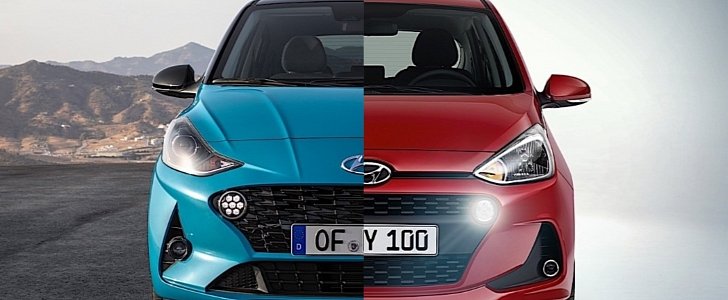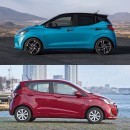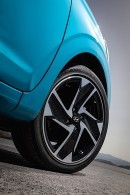One week before the start of one of the most important auto shows of the year in Germany, South Korean carmaker Hyundai unwrapped the new generation i10, a car designed in and meant for Europe.
Continuing a bloodline that started life in 2007, the new i10 comes with perhaps the most extensive evolution of the nameplate, both in terms of design and capabilities.
The first thing that sets this model apart from the previous version of 2016 is its size. The new i10 is wider by 20 mm and has a roofline lowered by an equal amount, which makes it look a lot meaner than the version it replaces.
The visual changes are apparent all around. At the front, nearly everything has changed: the shape of the grille, the position of the fog lights, the size and shape of the lateral air intakes, and even the hood, which now proudly wears the Hyundai emblem. Perhaps the only things that still reminds of the older generation are the headlights, which boast a more modern interpretation of the already familiar shape.
Looking at the two i10s from the side is like looking at two different cars altogether. The humble stance of the previous generation, with its front end leaning submissively towards the ground, has been replaced by a prouder look, with more muscular body lines.
The rear boasts changes as well, albeit not that extensive as the rest of the car. The new i10 retains much of the overall shape of the previous design, but builds upon it by reinterpreting a line here and there.
The new i10 will enter the market in a few months with a choice of two engines, a 1.0-liter MPi with 67 PS and 96 Nm torque, and a 1.2-liter MPi with 84 PS and 118 Nm torque. It’s likely some other choices will be added soon after that, possibly even variants of the natural gas engine deployed in the current generation.
The first thing that sets this model apart from the previous version of 2016 is its size. The new i10 is wider by 20 mm and has a roofline lowered by an equal amount, which makes it look a lot meaner than the version it replaces.
The visual changes are apparent all around. At the front, nearly everything has changed: the shape of the grille, the position of the fog lights, the size and shape of the lateral air intakes, and even the hood, which now proudly wears the Hyundai emblem. Perhaps the only things that still reminds of the older generation are the headlights, which boast a more modern interpretation of the already familiar shape.
Looking at the two i10s from the side is like looking at two different cars altogether. The humble stance of the previous generation, with its front end leaning submissively towards the ground, has been replaced by a prouder look, with more muscular body lines.
The rear boasts changes as well, albeit not that extensive as the rest of the car. The new i10 retains much of the overall shape of the previous design, but builds upon it by reinterpreting a line here and there.
The new i10 will enter the market in a few months with a choice of two engines, a 1.0-liter MPi with 67 PS and 96 Nm torque, and a 1.2-liter MPi with 84 PS and 118 Nm torque. It’s likely some other choices will be added soon after that, possibly even variants of the natural gas engine deployed in the current generation.

































